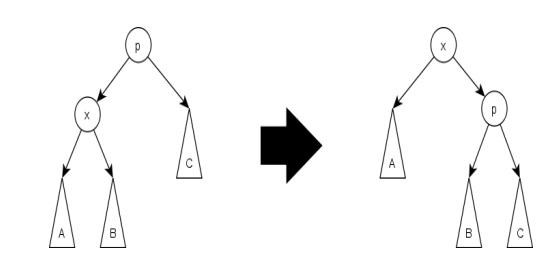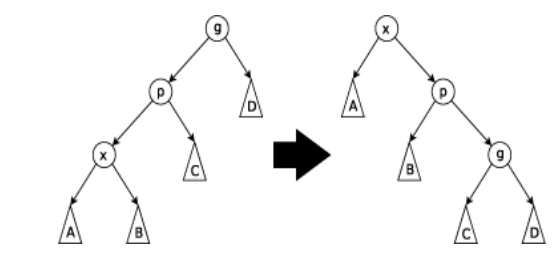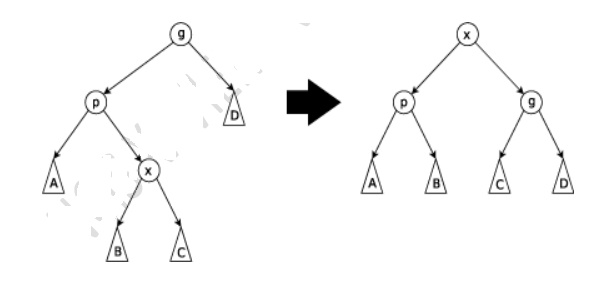Chapter: Programming and Data structures : Advanced Non-Linear Data Structures
Splay trees
SPLAY TREES:
Splay trees are another variation of the binary search tree.
Novel characteristics:
┬À
Does not require any accounting
information (color, level, height, etc.)
┬À
O(N) worst case for any single
operation, but O(log N) average case
┬À
Frequently-accessed keys are moved up
so that they are near the root.
Splay Operation:
Fundamental operation is the splay:
this operation re-arranges the tree to make a specified node the root. A
side-effect of the splay is that imbalances in the tree are corrected.
The simplest approach to splaying is the bottom-up approach,
which is similar to the rebalancing operations we have seen for AVL, Red-Black,
and AA-trees. On some path from a selected node back to the root, rotations are
performed.
There are three cases for splaying. (Note that only the
"left" cases are shown: there are symmetric "right" cases.)
┬À Zig
┬À
Zig-Zig
┬À Zig-Zag
Zig Step:
This step
is done when p is the root. The tree
is rotated on the edge between x and p. Zig steps exist to deal with the
parity issue and will be done only as the last step in a splay operation and
only when x has odd depth at the
beginning of the operation.

Zig-zig Step:
This step
is done when p is not the root and x and p is either both right children or are both left children. The
picture below shows the case where x
and p are both left children. The
tree is rotated on the edge joining p
with its parent g, then rotated on the edge joining x with p.

Zig-zag Step:
This step
is done when p is not the root and x is a right child and p is a left child or vice versa. The
tree is rotated on the edge between p
and x, and then rotated on the resulting edge between x and g.

Overall splaying algorithm (bottom-up): splaying continues until
the node X is the root of the overall tree.
A splay
operation is performed after each access. We recursively apply the splaying
strategy until the node of our interest reaches the root.
Example: Result of splaying at node 1
(after 1 is accessed).

┬À
Insertion: X is
the newly inserted node (and will become the root after splaying).
┬À
Search:
o If X is in the tree, X is the node found (and
will become the root after
splaying).
o
If X is not in the tree, the last node accessed
prior to reaching the NULL pointer is splayed.
┬À
Deletion:
o
First, X is the node to be deleted. Splay it to the root (and delete it).
o Then for the
two subtrees L and R (left and right), we find the largest element in L. Splay
it to the root of L. At this point, L's (new) root has no right child.
o Finally connect R to the root of L as its
right child.
Example: Delete 6

Related Topics